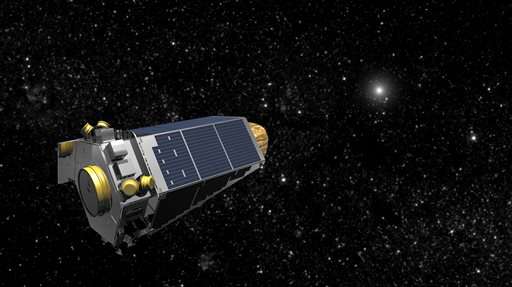NASA's planet-hunting Kepler Spacecraft in emergency mode (Update)

NASA is trying to resuscitate its planet-hunting Kepler spacecraft, in a state of emergency nearly 75 million miles away.
The treasured spacecraft—responsible for detecting nearly 5,000 planets outside our solar system—slipped into emergency mode sometime last week. The last regular contact was April 4; everything seemed normal then.
Ground controllers discovered the problem Thursday, right before they were going to point Kepler toward the center of the Milky Way as part of a new kind of planetary survey. Kepler was going to join ground observatories in surveying millions of stars in the heart of our galaxy, in hopes of finding planets far from their suns, like our own outer planets, as well as stray planets that might be wandering between stars.
This is the latest crisis in the life of Kepler.
Launched in 2009, the spacecraft completed its primary mission in 2012. Despite repeated breakdowns, Kepler kept going on an extended mission dubbed K2—until now. The vast 75 million-mile distance between Kepler and Earth make it all the harder to fix.
"Even at the speed of light, it takes 13 minutes for a signal to travel to the spacecraft and back," mission manager Charlie Sobeck said in a weekend web update from NASA's Ames Research Center in Mountain View, California.
Recovering from this emergency condition "is the team's priority at this time," Sobeck said.
More than 1,000 of Kepler's detected 5,000 exoplanets have been confirmed to date, according to NASA.
Kepler is named after the 17th century German astronomer and mathematician Johannes Kepler.
More information: NASA: www.nasa.gov/mission_pages/kepler/main/index.html
© 2016 The Associated Press. All rights reserved.




















